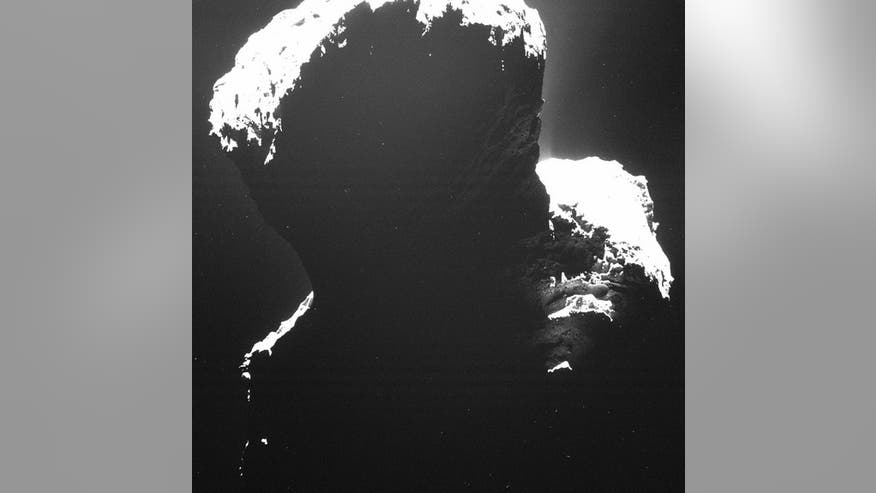For a long five and a half years, Comet 67P/Churyumov–Gerasimenko's southern side has been shrouded by darkness. Now, it's coming into the light, and new microwave images, taken before the big reveal, suggest that the comet's "dark side" may have a very unusual composition.
The European Space Agency's Rosetta probe has been orbiting and investigating Comet 67P since August 2014 with the help of its Philae comet lander. The probe pulled together the most detailed portrait ever of a comet, but had one particular blind spot: the comet's southern side, which is dark for over 5.5 years before a brief, searing-hot year in the light during the comet's closest approach to the sun. Until that time, only Rosetta's microwave instrument, MIRO, could make any sense of the blackness.
"We observed the 'dark side' of the comet with MIRO on many occasions after Rosetta's arrival at 67P/C-G, and these unique data are telling us something very intriguing about the material just below its surface," Mathieu Choukroun, lead author of the new study and researcher at NASA's Jet Propulsion Laboratory in California, said in a statement. [Spectacular Comet Photos from Rosetta]
The group investigated data from that region from August to October 2014, and found evidence suggesting a large amount of ice had built up. MIRO's measurements indicated that material very near the surface is transparent, probably consisting of water ice or carbon-dioxide ice. This is very different from the dusty surface elsewhere on the comet.

0 komentar:
Posting Komentar